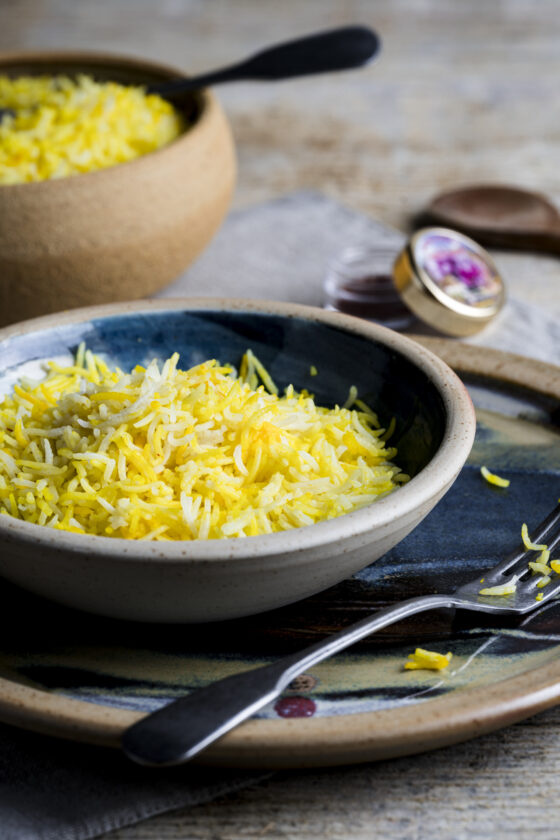How to make saffron rice
Saffron rice, also known as yellow rice, is a classic in the cuisines of India and the Middle East. Saffron rice is wonderfully aromatic, goes well with many other dishes, and is easy to prepare. But before I give you my recipe, let me introduce you to the world of saffron.
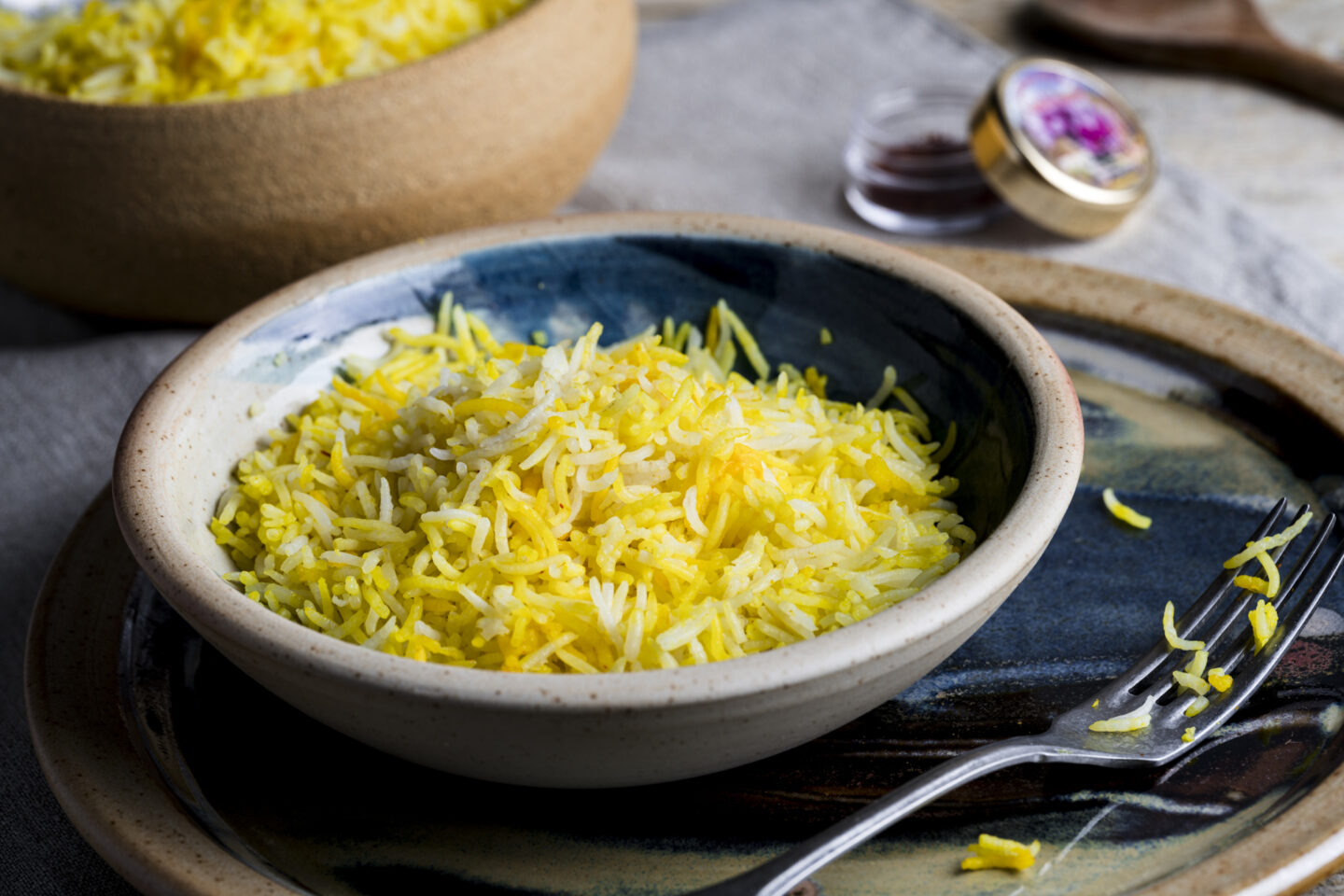
What is saffron?
Saffron is a spice derived from the mauve flower Crocus sativus. Saffron is the upper red part of the stigmas, found in the pistils of the flower. The word saffron comes from the Arabic zafaran, which means yellow. The name refers to the color the spice adds to dishes prepared with it.
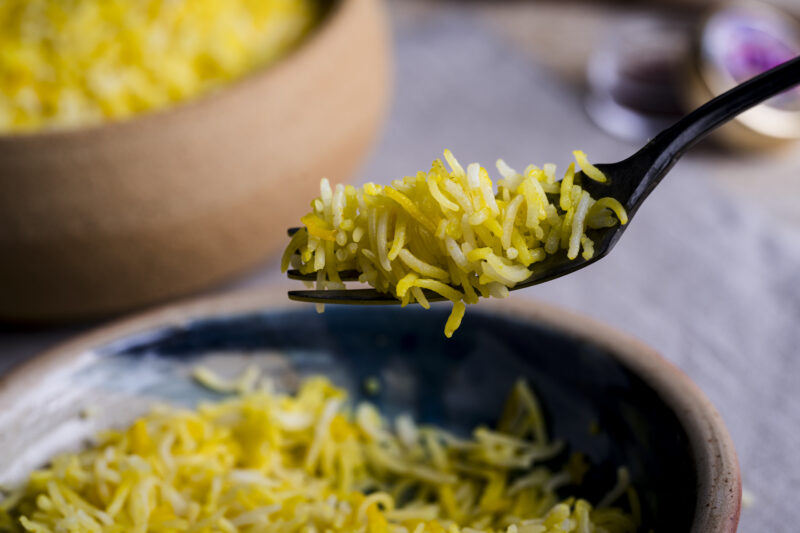
Crocus sativus
Crocus sativus is the only crocus flower that produces saffron. It is a very delicate plant that blooms only under ideal weather conditions. The flowers appear only in the fall, after the first cold snap, and do not bloom for more than 20 days. Crocus sativus does not grow wild, but is carefully cultivated in about 30 countries around the world. Iran is the cradle of the flower and saffron and still provides more than 90% of the world's production. Saffron is also harvested in Spain, Morocco, Greece, Turkey and even here in Belgium. The best saffron in the world comes from Kashmir.
The harvest
October is the harvest month for Crocus sativus. The flowers are picked by hand at dawn, just before the first rays of sunlight cause the calyxes to open. Men often do the picking, but it is the women who do the painstaking and precise work. They extract three stigmas from each pistil. These are dried in an oven or on a fire, where they lose 80% of their moisture and develop their aroma. The stigmas are now saffron threads. The best saffron comes from the upper red part of the stigmas.
Saffron, the red gold
Saffron is called the red gold for a reason. It is the most precious and expensive spice in the world. Picking the flowers and processing the saffron is done entirely by hand and the yield is very small. A picker harvests about 1,000 flowers in half an hour. After 2 hours of cutting and sorting, these flowers yield 5 grams of saffron.
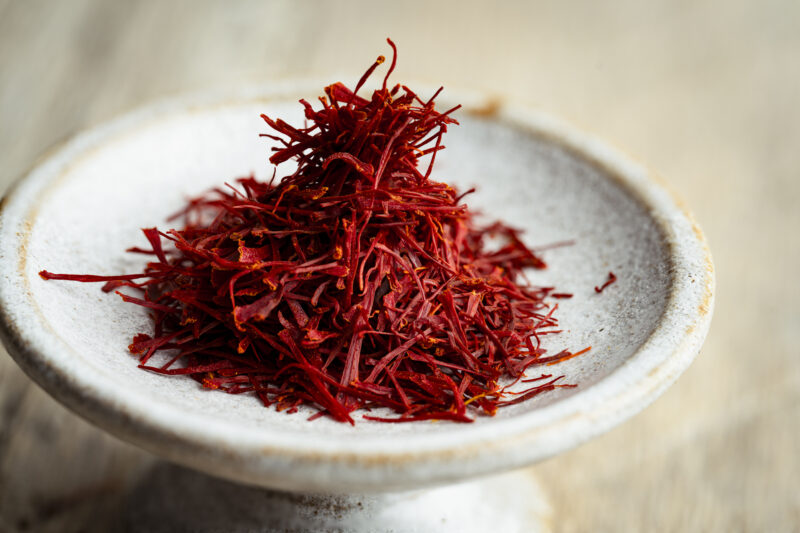
The taste of saffron
Saffron is a floral spice with honeyed, earthy notes and a slightly bitter, astringent aftertaste. The upper red portion of the saffron strands contains the highest concentration of flavor and color. It is therefore important to buy good quality saffron.
When buying saffron, what should you look for?
- When buying saffron, you should pay attention to the following points because there is a lot of fake saffron in circulation.
- Never buy saffron in powder form. It is often mixed with flour or turmeric or contains the less aromatic part of the stigmas. Saffron powder also loses its flavor very quickly.
- Never buy cheap saffron strands. It is not real saffron, but safflower, a thistle-like plant. The stigmas are orange-yellow in color, but do not have the flavor of saffron.
- Negin is the highest quality saffron. The top of the stigmas is cut off and dried immediately. The threads are shorter, redder and much more aromatic than the average saffron.
- After Negin, Sargol is the finest saffron. With Sargol, the lower yellow part is removed after the threads are dried, not before as with Negin.
- Saffron threads with both yellow and red parts are cheaper and less potent in flavor and color.
- If saffron threads have a brownish color, they are old. Saffron is good for up to 3 years after drying.
- Buy saffron threads only in an airtight container. They absorb moisture from the air very quickly and lose their aroma.
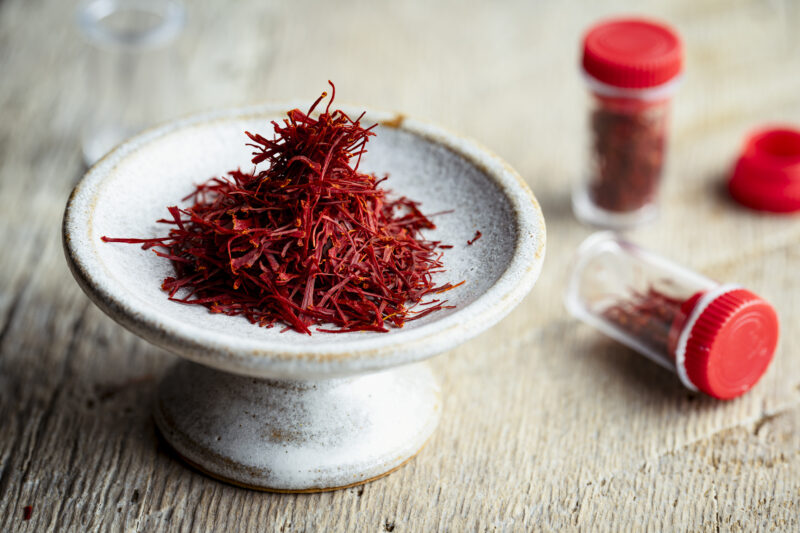
Saffron is healthy
Saffron contains a molecule called safranal, which is a mood enhancer. It is therefore a natural antidepressant and is called the spice of joy. Saffron strengthens the immune system and is good for the respiratory, nervous, and circulatory systems. Saffron also helps you lose weight because it inhibits appetite. Saffron has antibacterial properties and is useful for pimples or acne. Want clear, glowing skin? Rub yourself with a saffron scrub or do what Cleopatra did. She took a daily bath in donkey milk scented with saffron.
Saffron in the kitchen
Saffron is delicious with rice. Think Milanese risotto, Spanish paella or Indian biryani. I will share with you the recipe for saffron rice that I brought back from Oman.
You can use saffron in preparations with earthy vegetables such as carrots, leeks and mushrooms. It goes especially well with potatoes and is essential in Spanish tortillas.
Saffron is very good in stews with lamb or chicken. Preparations are mainly from the East and North Indian cuisines. Examples include shuwa, chicken tagine with candied lemon, and the typical Amish chicken pot pie.
Saffron takes fish and shellfish dishes, such as bouillabaisse, to another level.
Finally, saffron is used in drinks and desserts. If you like yogurt, try mango lassi with saffron. In Oman, coffee and tea are flavored with saffron. I love the combination of saffron and rose, as in the Indian bread pudding shahi tukra.
Cooking with saffron
To cook with saffron, you must first release the flavor. This is done by allowing the saffron to absorb moisture. The best and quickest way is to first grind the strands into a powder with a little sugar in a mortar. Then soak the powder for 15 minutes in a little water at 60°C maximum. You add the saffron water at the end of the preparation, but the right timing is essential. You must not boil the saffron in your dish because it will lose all its flavor. If you add it too late, the flavor will not develop. You then tend to use extra saffron, which makes the bitter notes predominate.
Recipe: how to make saffron rice
During my trip to Oman, I enjoyed a traditional shuwa with saffron rice. It was a wonderful experience, and the chef shared his recipe for saffron rice with me.
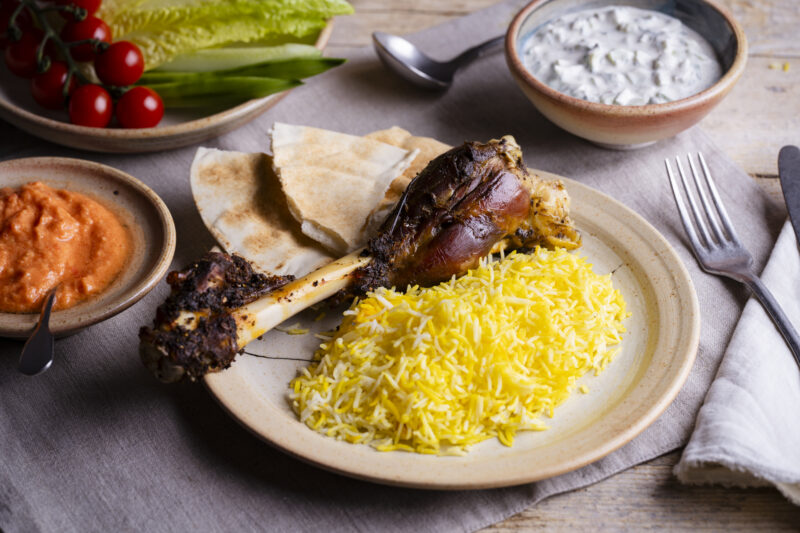
Ingredients for 2 servings:
- 200 g basmati rice
- 250 ml water
- 12 saffron strands
- ½ teaspoon sugar
- 1 knob of melted butter
-
Step 1
Rinse the rice under running water until the water is clear. Place the rice in a bowl of cold water and soak for ½ hour. Drain the rice in a colander.
-
Step 2
Place the rice in a rice cooker or rice steamer with a double lid. Add 250 ml water and bring to a boil. Reduce heat to low and cook for 10 minutes. Turn off the heat and let the rice rest for another 10 minutes.
-
Step 3
Meanwhile, in a mortar, grind the saffron strands with the sugar to a powder. Mix the powder with a tablespoon of hot water (no hotter than 60°C). Allow the saffron to soak for 15 minutes to release its flavor.
-
Step 4
Mix the saffron with the melted butter under the rice and allow the flavors to blend for a few moments before serving.
![SG Oman Cuisine 0213]()
